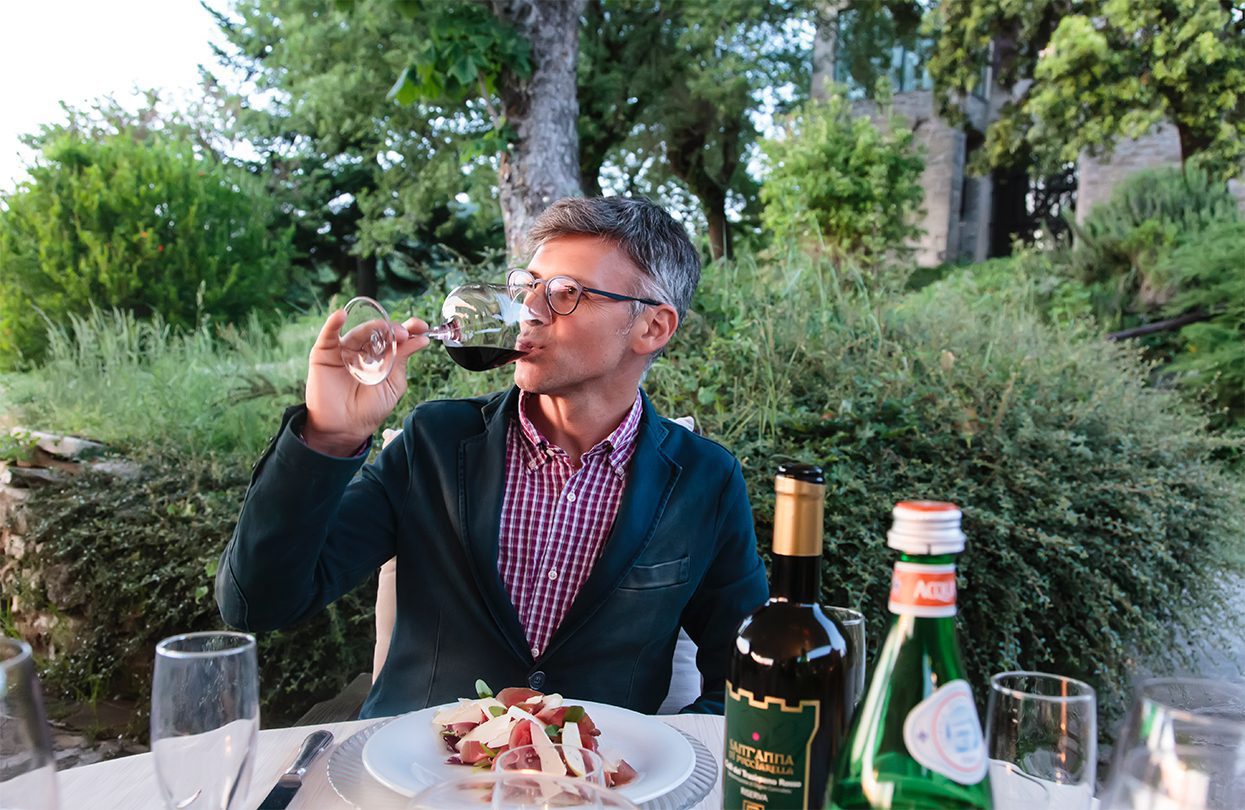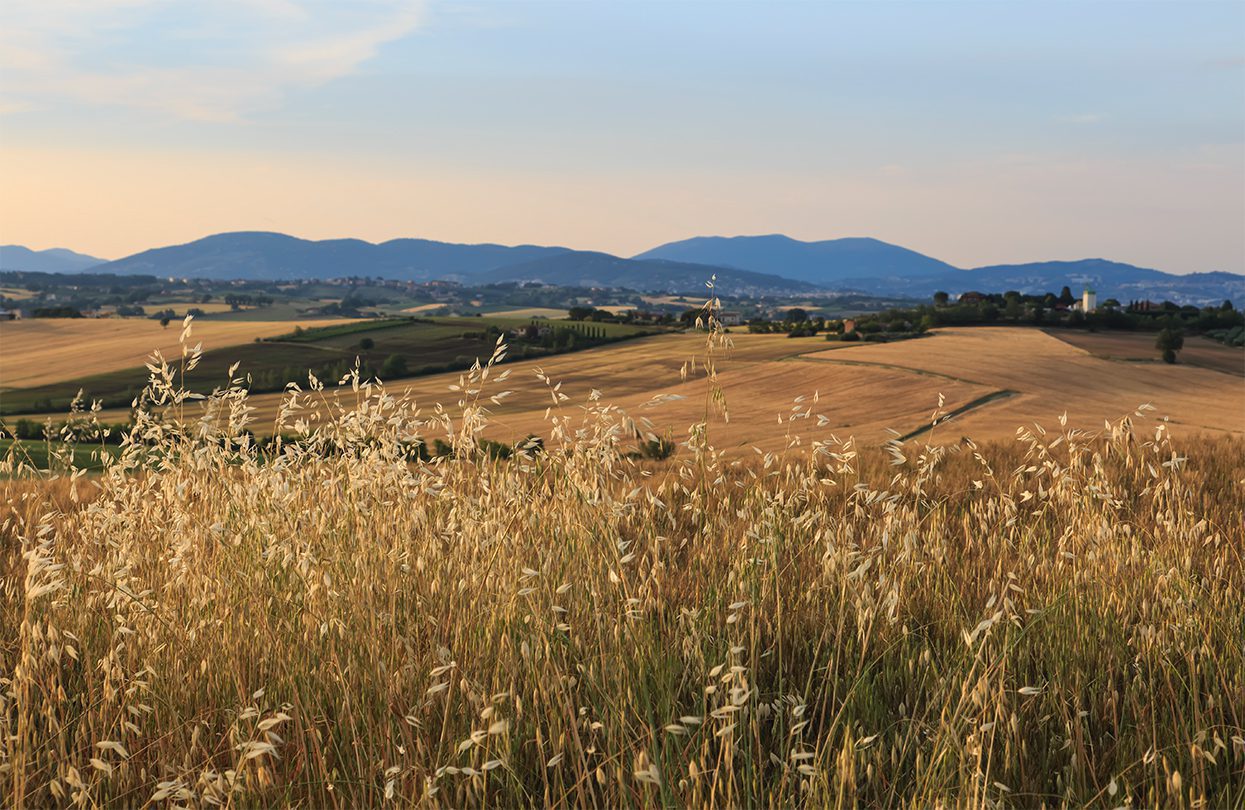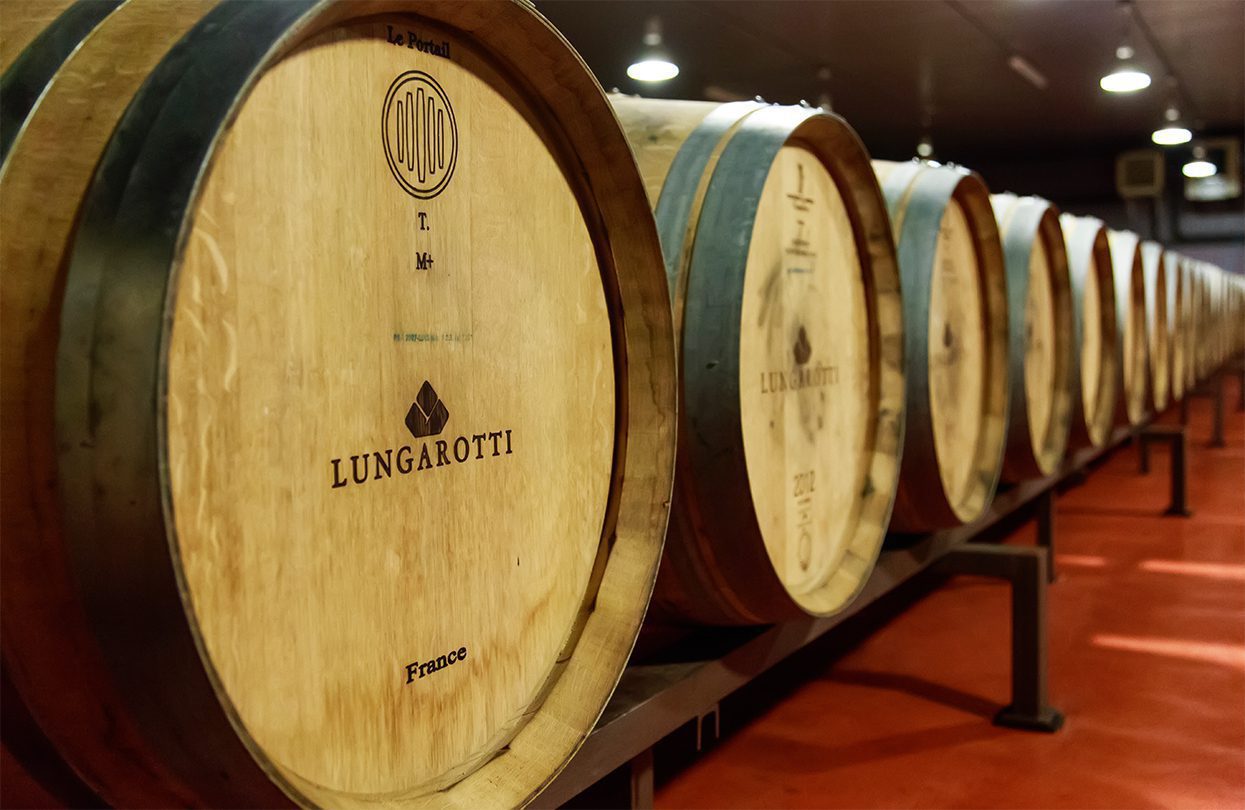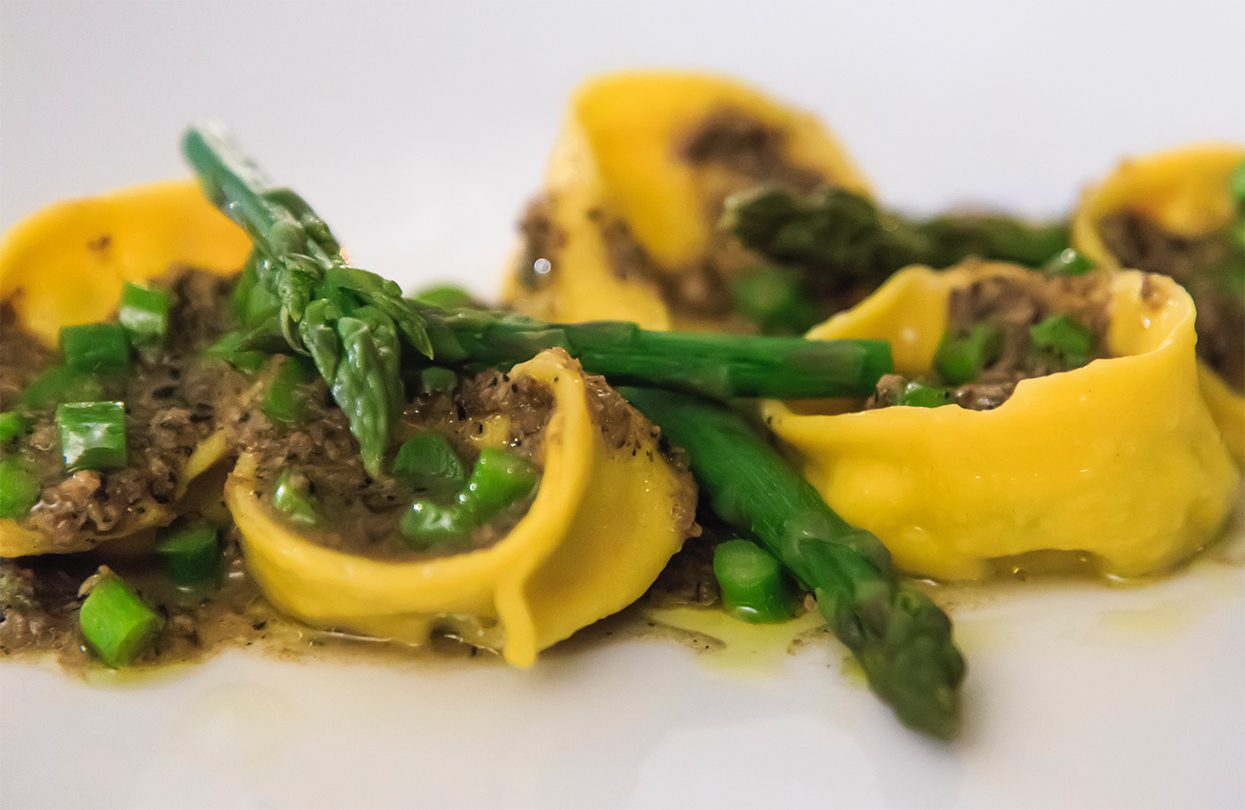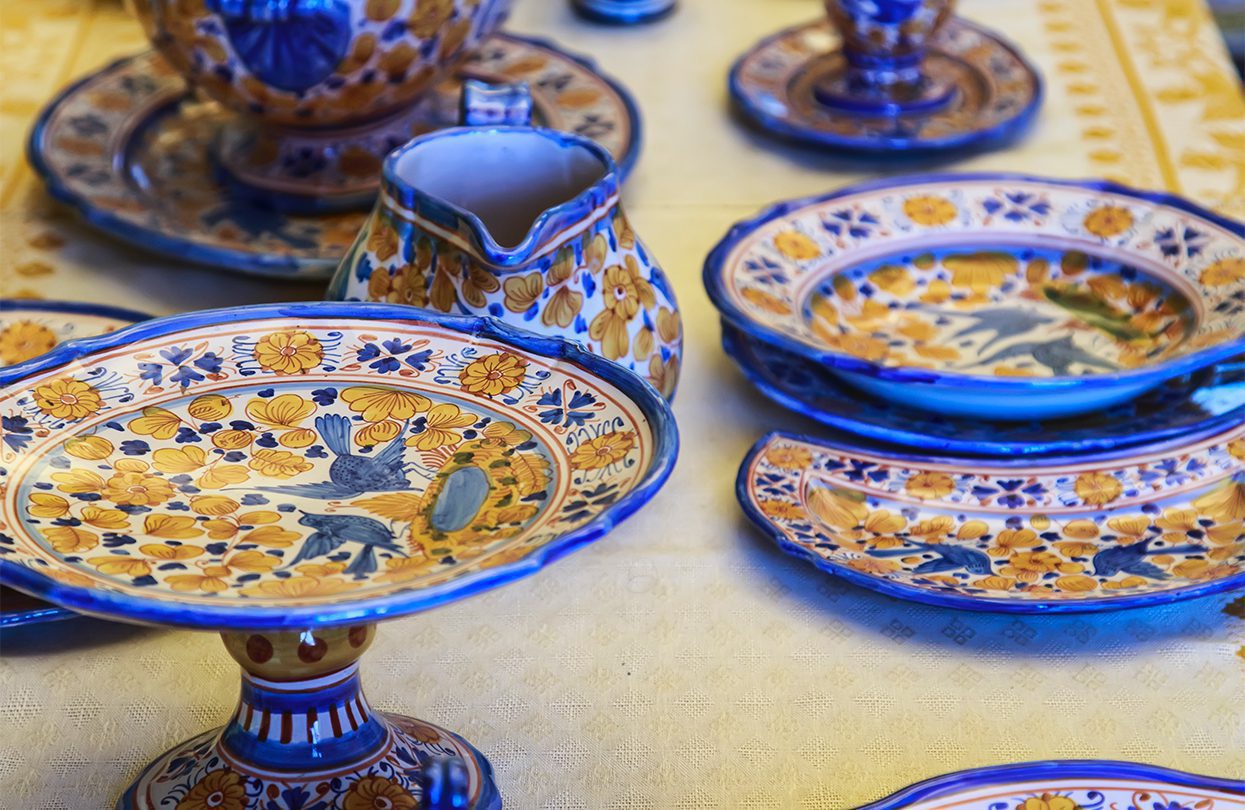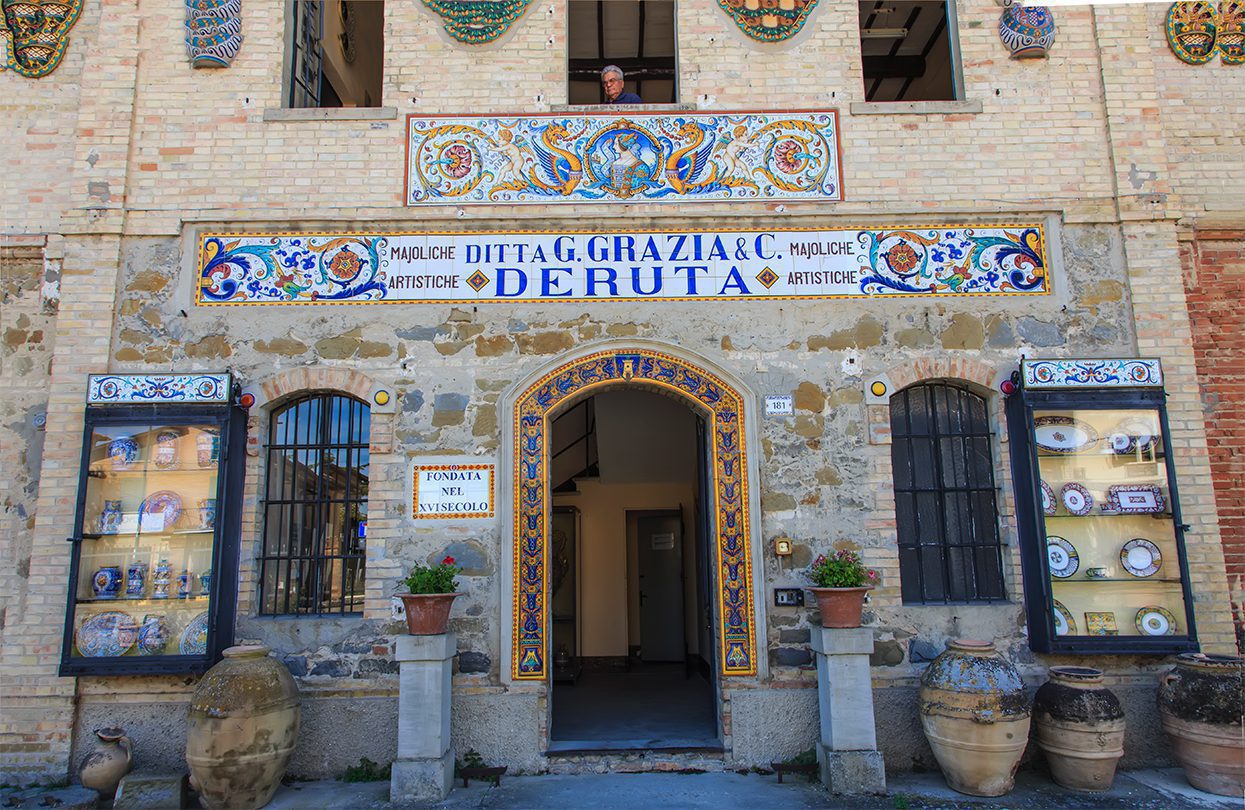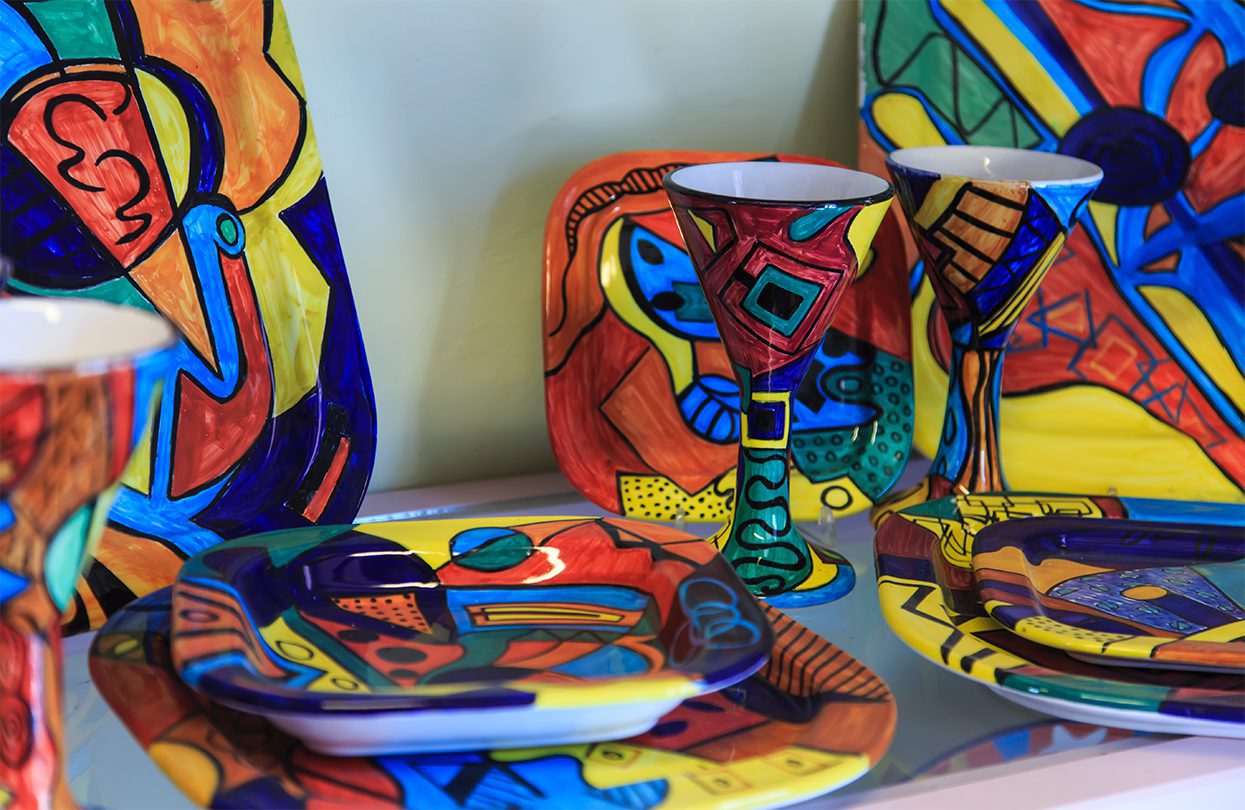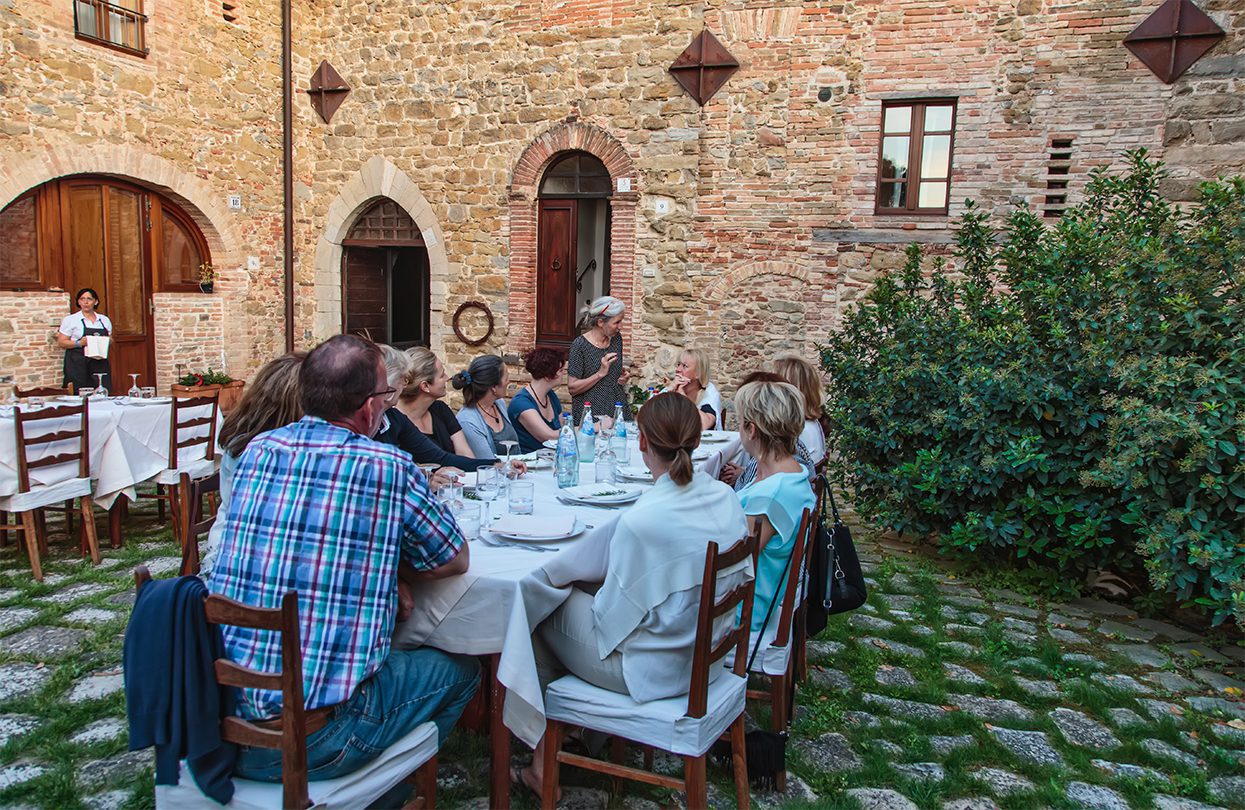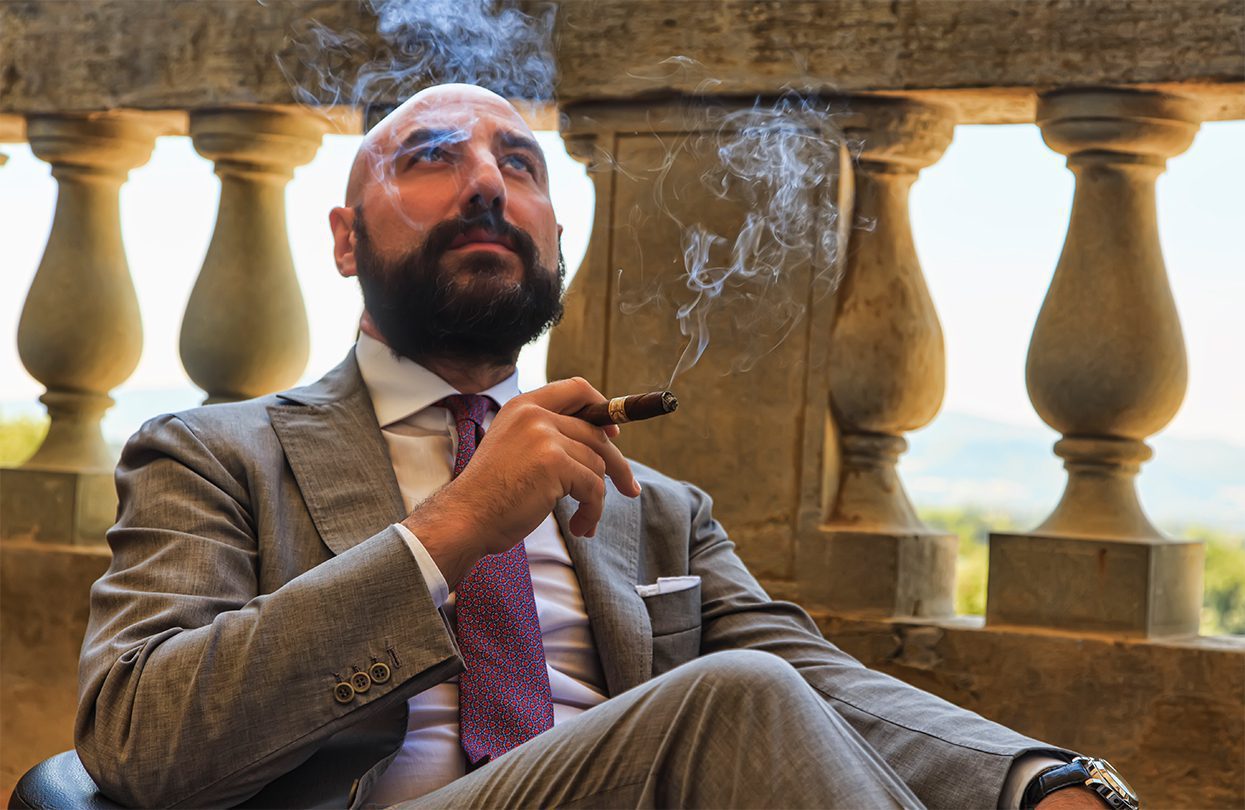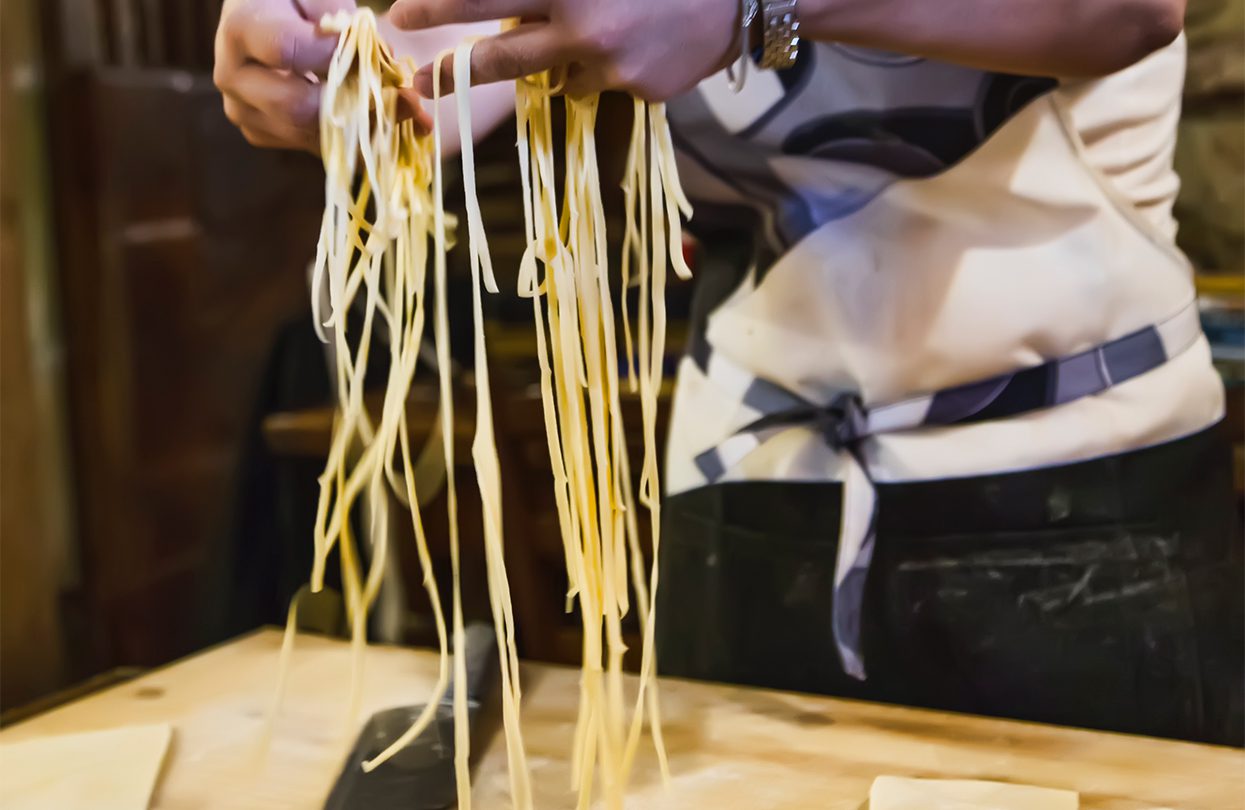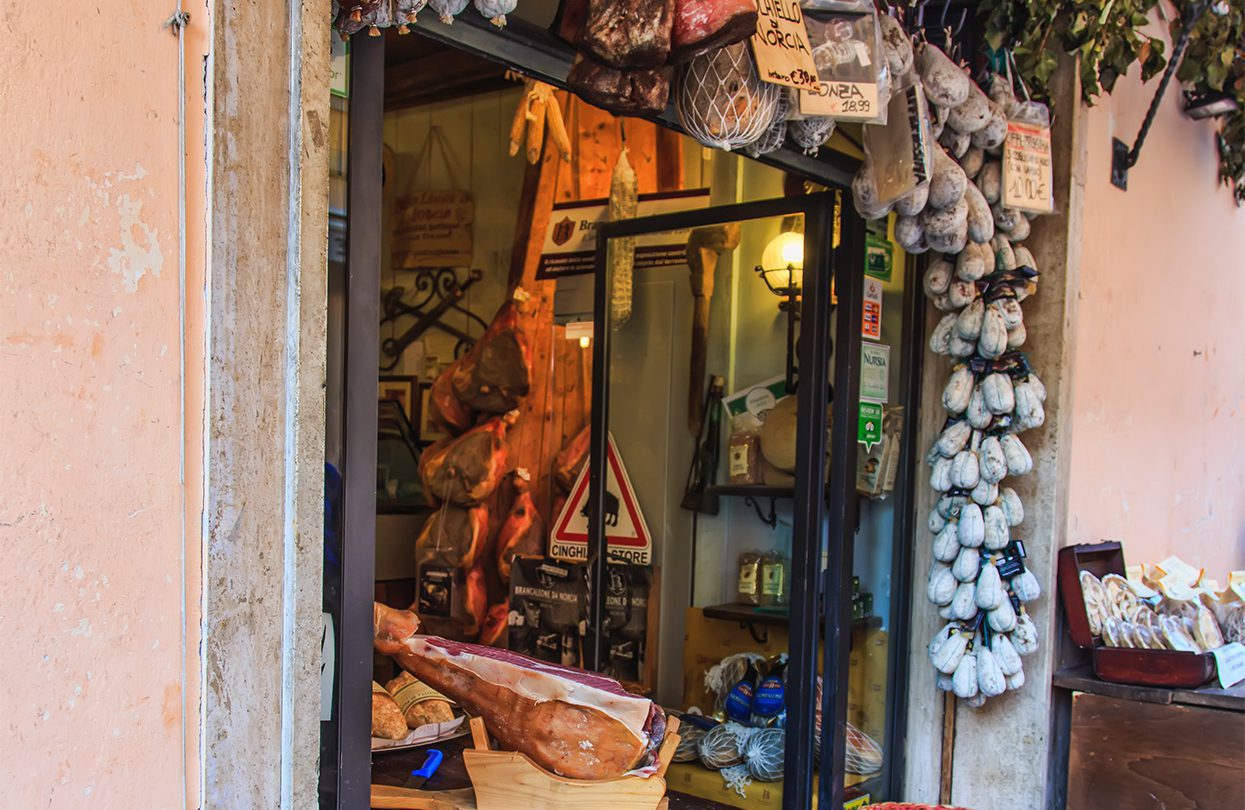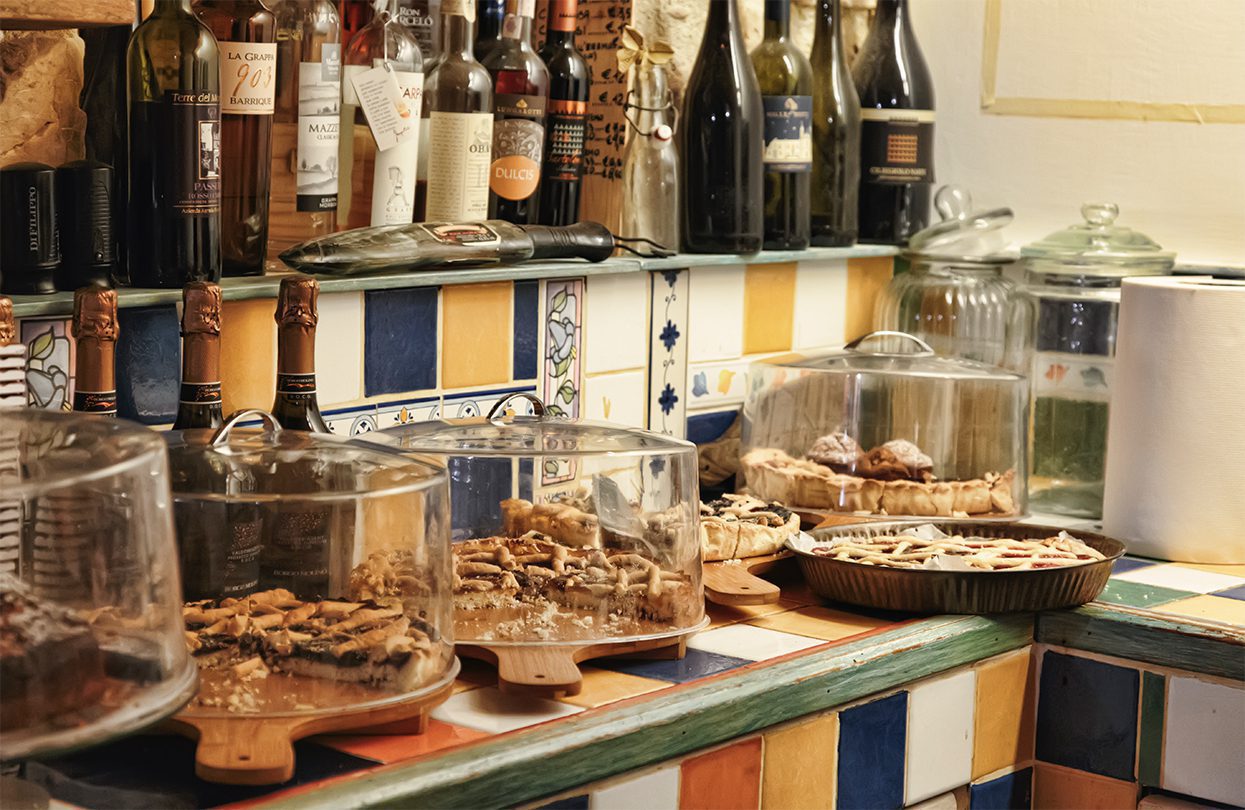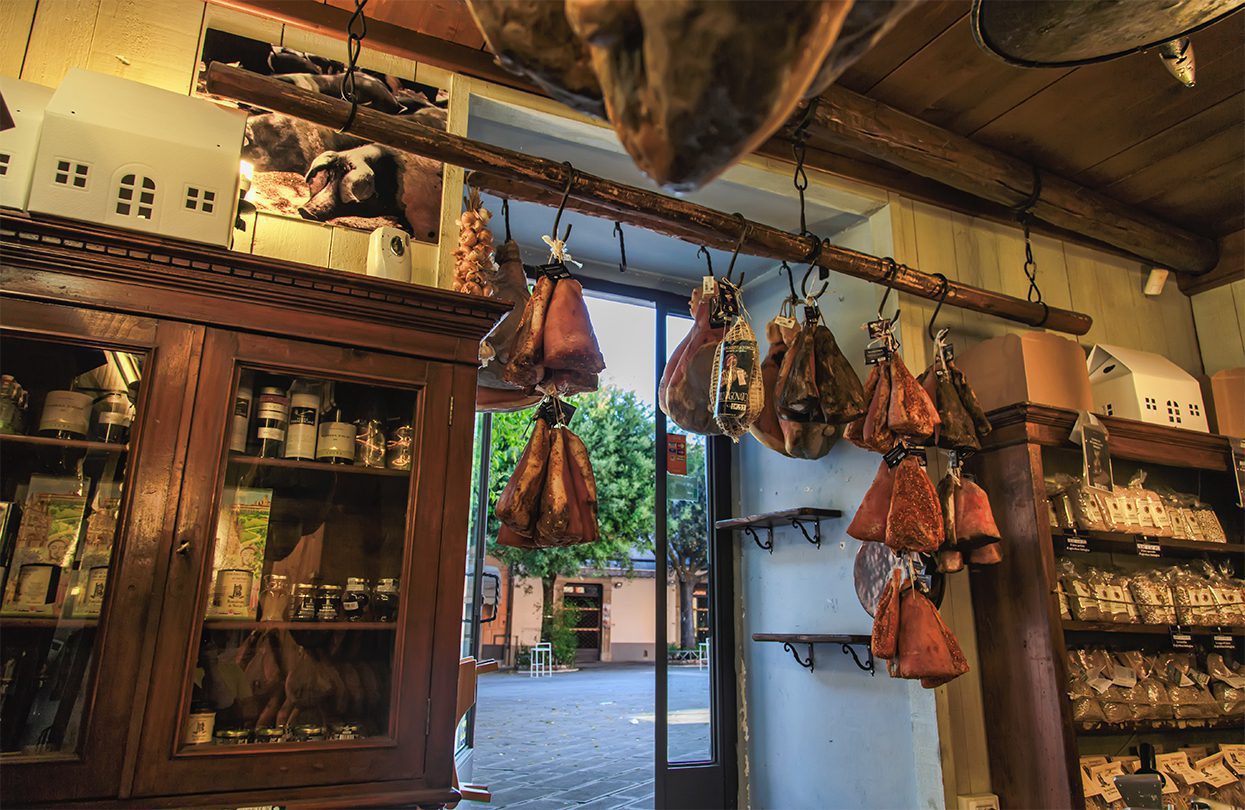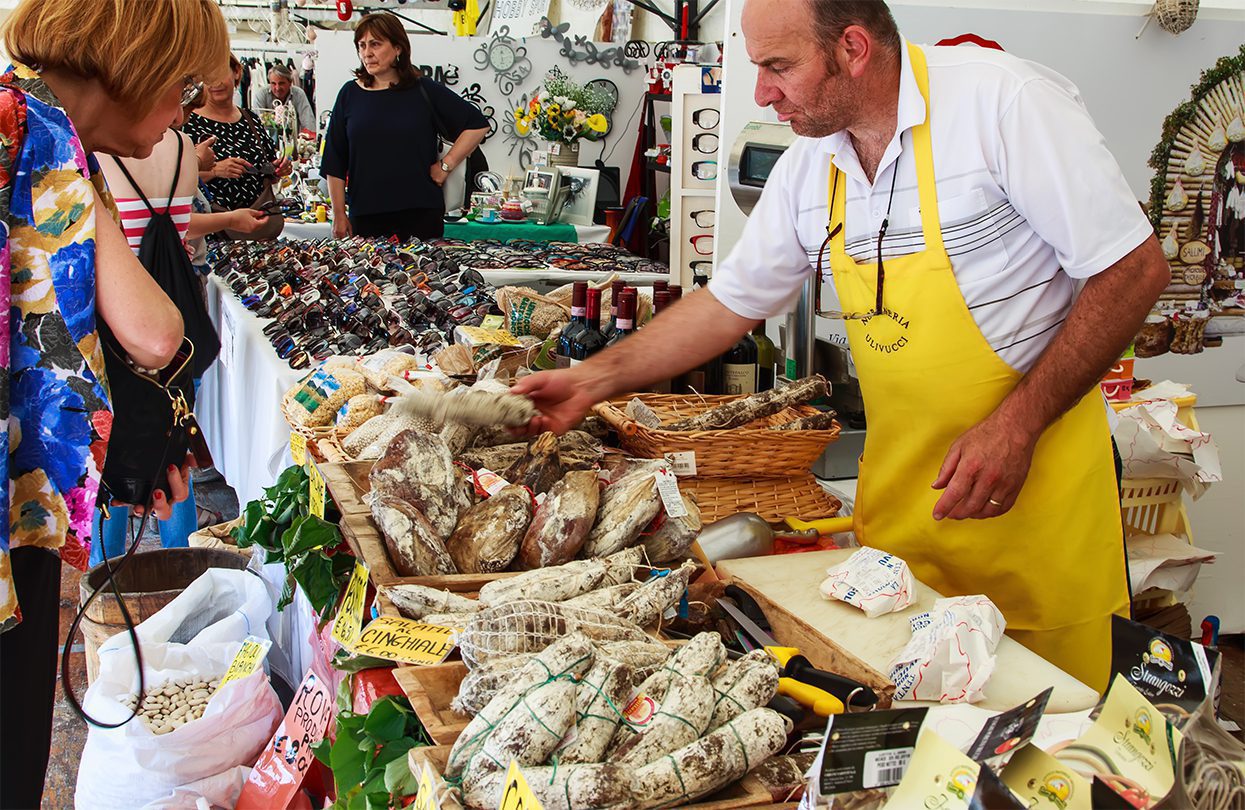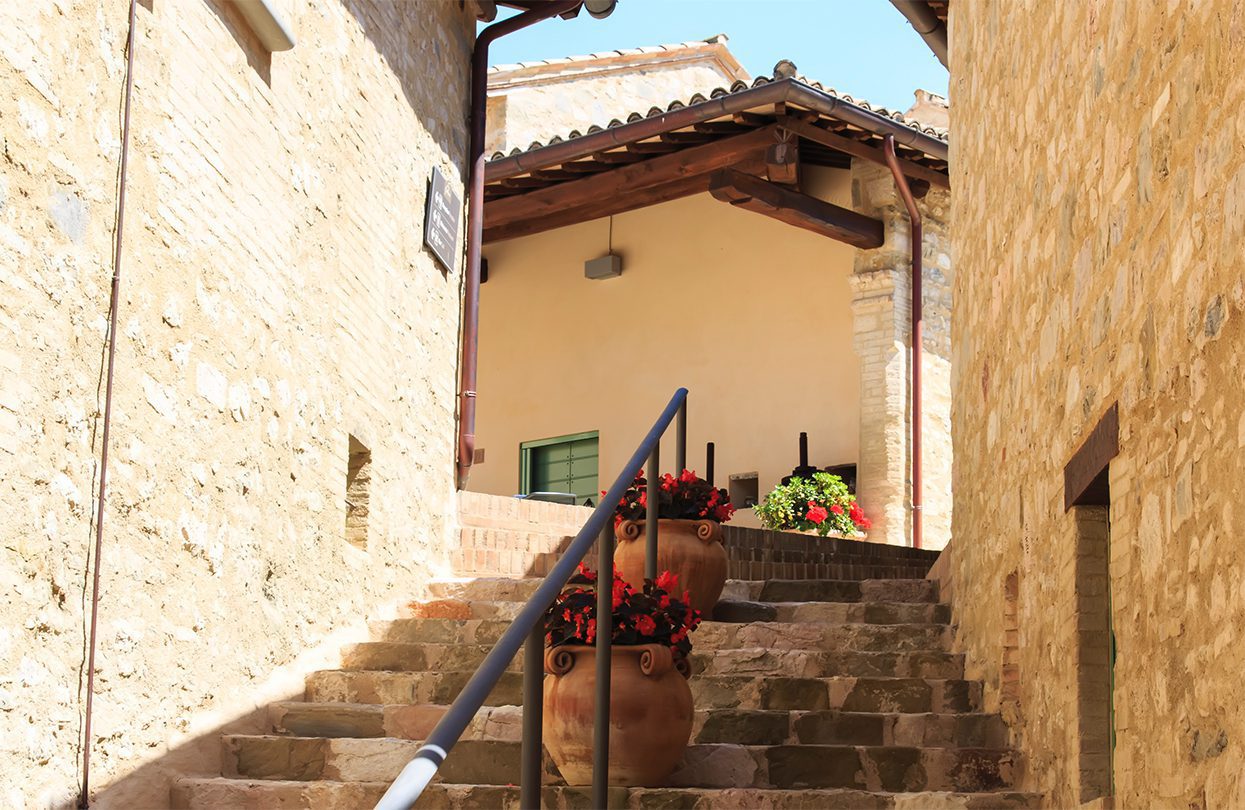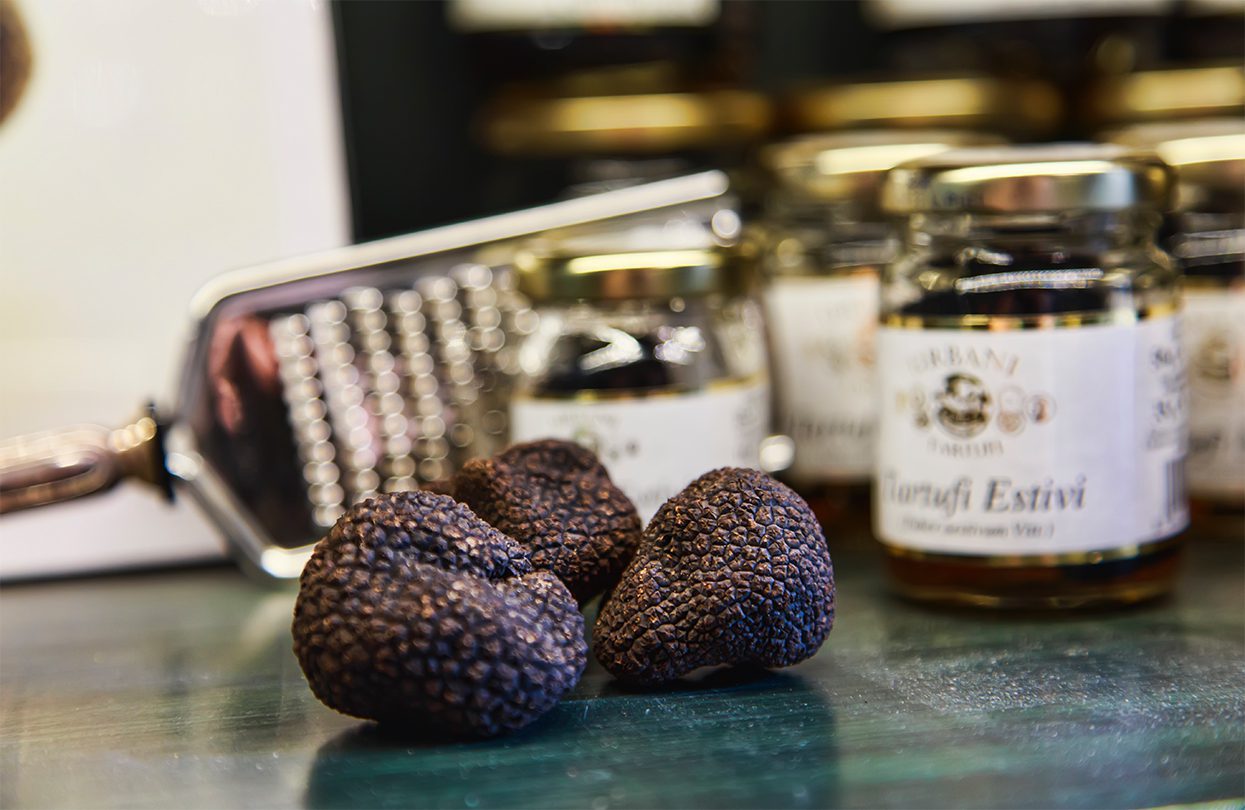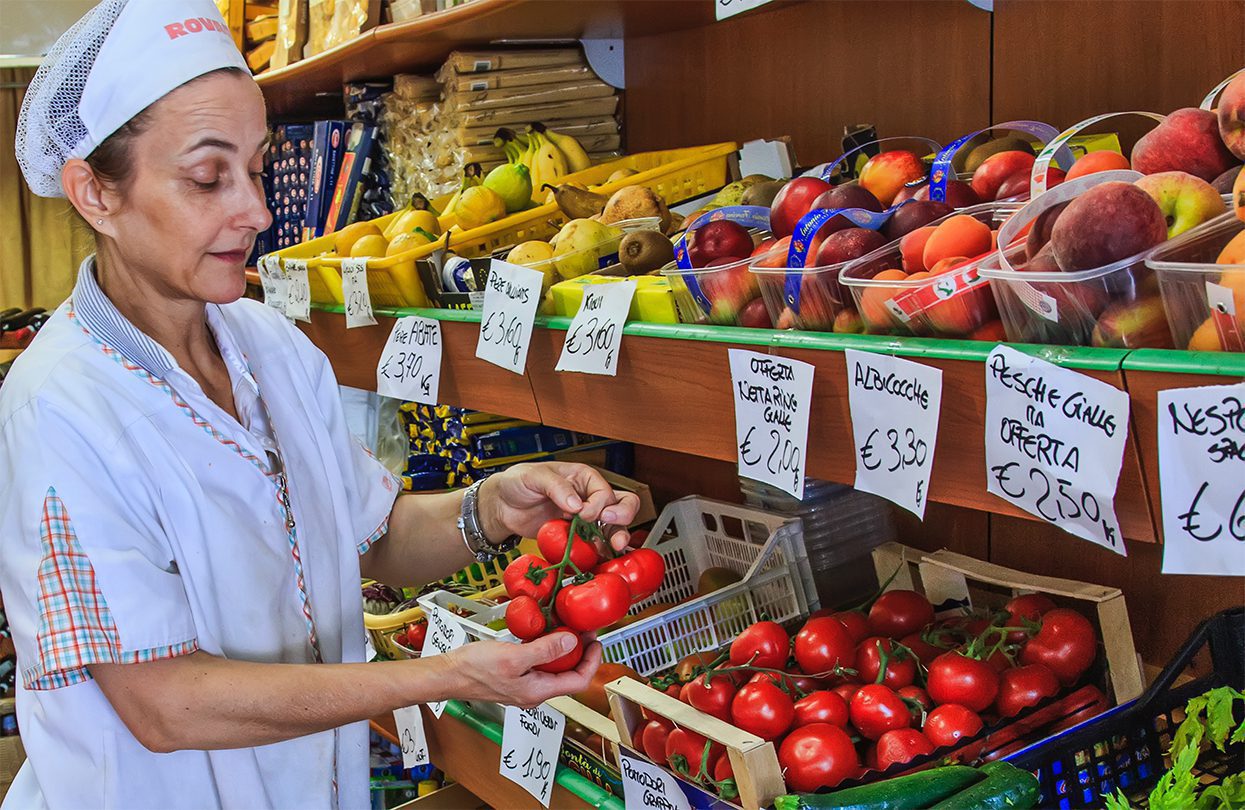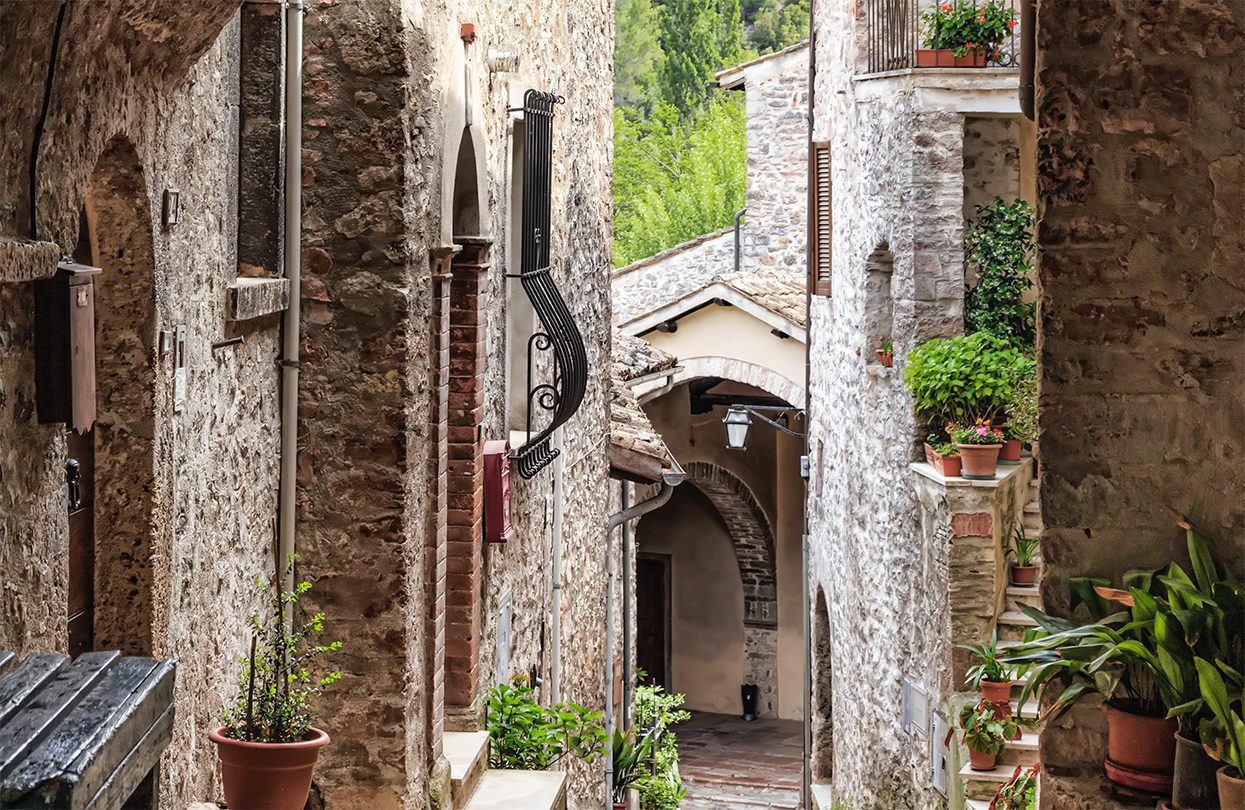Leave Rome its Colosseum and Paris its Eiffel Tower; let Tuscany have its Chianti wines and hordes of visitors. Where I’m going is Italy’s reclusive child, Umbria – Europe’s bona fide slow-food HQ.
After collecting my Maserati from Modena, I take a leisurely road-trip through Umbria’s undulating landscape of quilted fields and steepled villages. The fetching vistas are in every imaginable hue of green and dotted with small farms where geese and chickens loiter along roadsides that seldom see passing cars. Umbria is also one of Italy’s most fertile corners, a region of old-fashioned food traditions, where refined ingredients boom.
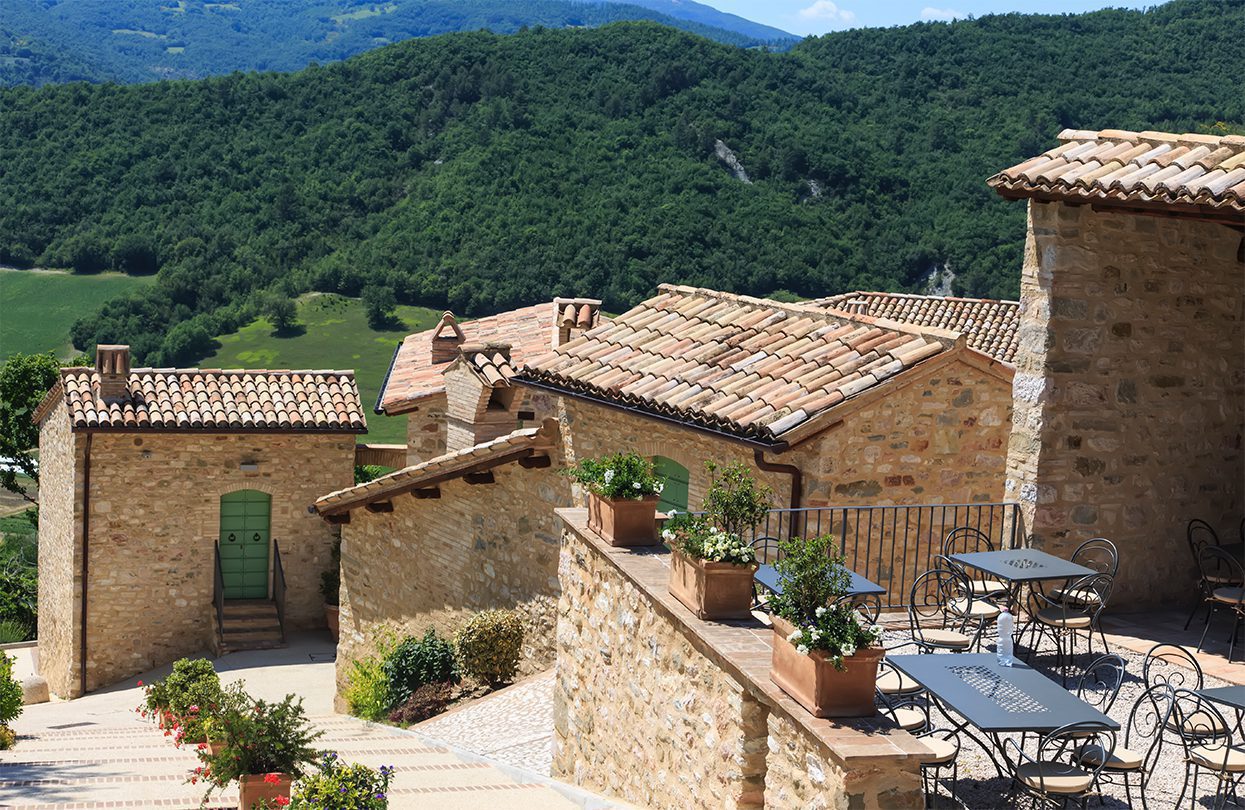
A view from my balcony at Castello di Gallano in Valtopina
Castello di Monticelli, near Perugia
Right at the top of my Umbria must-do list is to spend a night in a castle, the grandest of which is Castello di Monticelli, surrounded by two acres of gardens and terraces, six acres of forest, and a large patch of land where organic produce is grown.
Proprietor Ellen Krauser explains, “Castello di Monticelli started life in the 6th century as a fortress, then she was a monastery, which became a hunting lodge and in the last century, she was a prison during the World Wars. My business partner, Prof Giuseppe Tullio, and I spent 18 years reinstating the medieval features of every room.”
Dinner is an al fresco, four-course event with typical local produce; and breakfast, taken in a glass fronted conservatory facing the valley and Perugia in the distance, is a continental indulgence.
Majolica Ceramics, Deruta
At first I felt certain the beautiful stone town of Deruta is like all the other medieval hamlets in rural Umbria, but walking through its ancient gates I soon see its claim to fame. The streets are lined with ceramic shops, workshops, factories, pottery schools – there’s even a ceramics museum and a place to try your hand at the potter’s wheel and become an artisan’s apprentice for just the day.
I visit Grazia Maioliche Ceramics, a centuries old ceramic factory, and meet with Dr Ubaldo Grazia who speaks of his family’s history in ceramics and the succession of highly sought after master artists who embellish their pottery. Dr Grazia explains that over the past 900 years, the craft has been handed on from father to son, with no changes to the method.
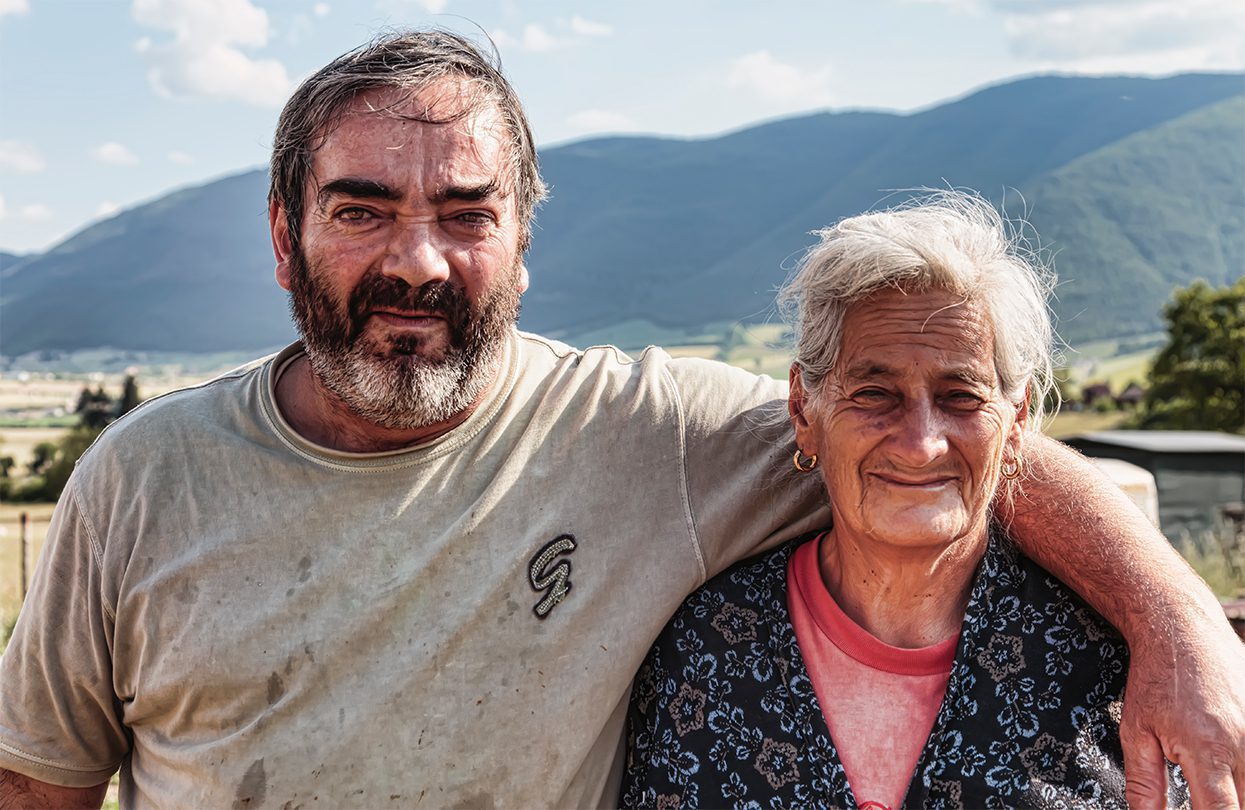
Catia Ulivucci’s mountain Shepard (and his mother) especially came down the mountain (a 2 day trek) for this photo opportunity
Lungarotti Winery, Torgiano
I’m lunching at L’U Winebar on an unfussy gourmet fare with Chiara Lungarotti of the Lungarotti Wine Estate. Over a glass of Rubesco, she explains that Umbria’s balmy climate is ideal for growing wine. Her late father first began planting vines on the 620-acre estate back in 1962 and now Lungarotti exports some 2.5-million bottles annually. A cellar tour reveals the science behind the vinification process, and concludes with a tasting. As I leave the village I pop into the wine museum, designed by Chiara’s mother.
Umbrian Beer, Torgiano
Resuming my food trek, I meet Antonio Bocco of Fabbrica della Birra Perugia, a little brewery producing some of Umbria’s finest ales. Antonio tells me how he and a group of beer-loving friends planned the relaunch of Fabbrica della Birra Perugia – the region’s signature beer whose factory closed down in the early 1900s.
Hotel Le Silve, near Assisi
Heading up a steep mountain pass, the fire-breathing soundtrack of Maserati’s Ferrari engine is pure rock ‘n roll. But I cannot help but think I’ve missed a turning as my surroundings are now getting way beyond rural. The tar road gives way to gravel, which becomes a single dirt track at the end of which is a set of large iron gates, providing access to a 10th-century mountain inn – Hotel Le Silve di Armenzano. The restaurant’s breath-taking views alone make it a worthwhile trip, but wait till you see the menu – it’s a religious experience.
Read More: Luxurious Getaway & Indulgence As Mandarin Oriental Lake Como Reopens
The best pasta restaurant in Europe
My numerous encounters with Italy’s pasta has pretty much guaranteed a return visit, especially so to the pastoral hamlet of Scheggino, a hill village where nothing much has happened in the past century. Here several flights of ancient grey stone stairs carries me to Osteria Baciafemmine. Elisa Valentini smacks around a ball of pasta, kneading it this way, then that way, explaining that her typical Umbrici pasta is made from only flour and water and that after kneading, it’s rolled out then roughly sliced into spaghetti-like strips. Elisa explains that for her Umbrici, the perfect accompaniment is truffles – moments later I’m presented with a plate of Italy’s best.
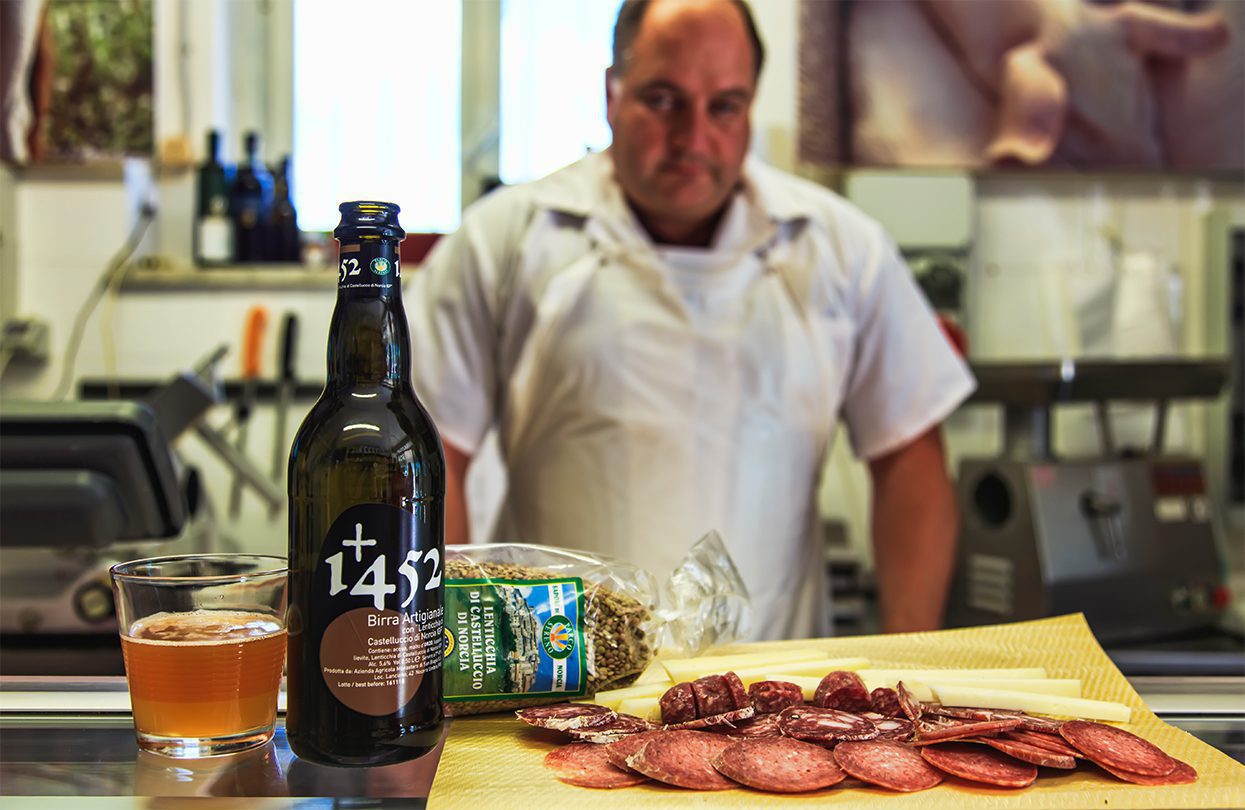
The Norcineria family butchers in Norcia
Food producers, Norcia
Tales about conjurers, palm readers, and witches who cast spells over the mountains and woods, have been told about Norcia for centuries – some conspiracy theorist feel this may explain its frequent earthquakes – the most recent of which left the old town’s ancient buildings lying in ruins.
Catia Ulivucci, a Norcia farmer, and owner of the famed cured meat shop ‘Norcineria Ercole Ulivucci’ explains that the 2016 earthquake took her farmhouse and her shop. Catia now runs her business from a stand in a car park. She is of course an Umbrian farmer and as such, she’ll make a plan to get back on track and with plans to open a cooking school aimed at tourists. Catia introduces me to her herd of Apennine sheep, and speaks of her favourite cheeses – the clotted Giuncata, eaten with sugar and cinnamon and Caciotta ai Tartufo, seasoned with black truffle.
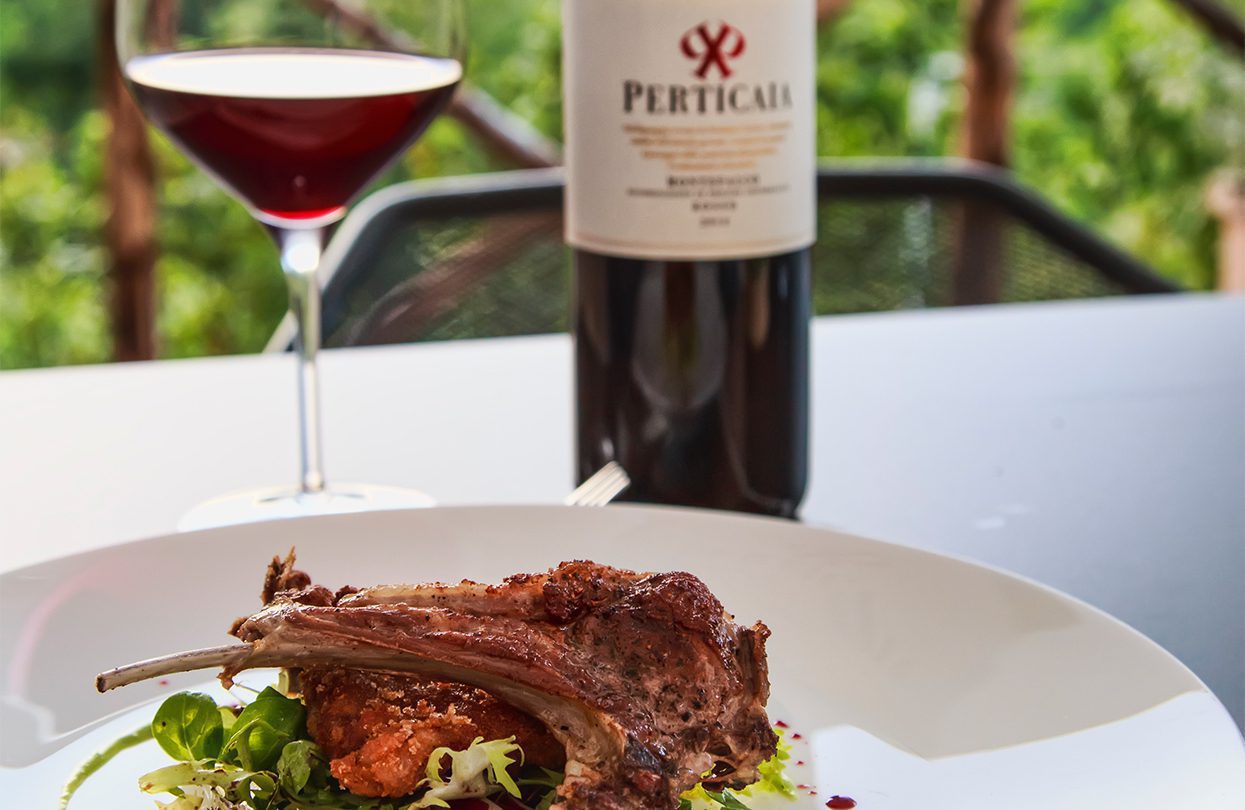
Castello di Gallano, Valtopina
Castello di Gallano, Valtopina
Dinner and my bed for the night is at Castello di Gallano in Valtopina, a UNESCO World Heritage Site. Once a Benedictine monastery, it was left abandoned for nearly half a century then privately purchased and renovated, delivering a small village of self-contained studios, swimming pools, a delicatessen and two places of worship.
Over a glass of Montefalco Rosso I look out across the valley bathed in hues of indigo and mauve, in the distance an Umbrian farmer is tilling the soil with his hoe, and further still a tractor fires up to do some of the same. Around me the branches hang low with birds seeking out a suitable vantage point to see out the day. For more information visit umbriatourism.it. ◼
Subscribe to the latest edition now by clicking here.
© This article was first published in Oct-Nov 2018 edition of World Travel Magazine.


